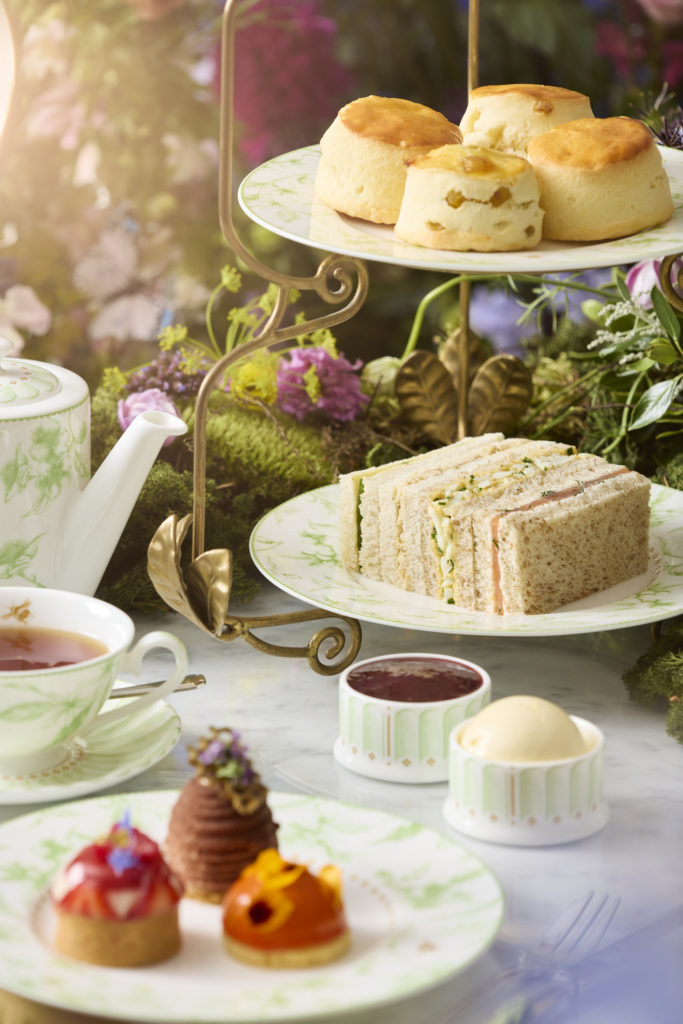The Royal Lancaster Hotel in London has teamed up with the Natural History Museum to produce a memorable afternoon tea
 Tea for two
Tea for twoTHEY say that there are four arts: music, painting, literature and pastry-making. Architecture is a sub-division of the latter.
As you wander through central London you can nod wisely to yourself and say, yes, how very true. A cake designer could have done all this.
The feeling is reinforced when you walk towards the Royal Lancaster Hotel, just by Hyde Park. The standout feature might be the Italian Gardens, a serene place of ornate fountains and sculptures. Then there’s the hotel itself. The Richard Seifert-designed Royal Lancaster opened in 1967, and very soon its outré good looks were recognised. Two years later it found itself featured in the iconic film The Italian Job with Michael Caine.
But here’s the really significant thing — on one of the lower roofs, there are eight beehives producing honey used in the hotel. The hives were first opened in 2009, with the bees arriving shortly after.
Some of that honey is now being pressed into use in the hotel’s ‘A Blooming British Afternoon Tea’, and very, very good it is.
Inspired by the nearby Natural History Museum (also very impressive architecture) the chefs at the hotel have followed the museum’s lead in their ongoing and comprehensive attempts to protect the natural world.
So the Royal Lancs have created beautiful sweet and savoury delicacies, influenced by British flowers and pollinators. It’s a treat for botanists, beekeepers and cake-lovers — and you don’t often get those three groups in the same sentence. Of course it’s a feast for anyone, and one you’ll not forget in a hurry.
This dramatic flora and fauna makeover is the work of Head Pastry Chef, Scott Villacora, and his team. Their work will have you reciting the dessert-lovers mantra: some is good, more is better. Too much is just right.
Prior to your afternoon tea, Royal Lancaster you can take a 30-minute nature walk through leafy Hyde Park – following a specially created map by the hotel.
Hyde Park is a huge green space, one of Westminster’s lungs that supports a significant number of lime trees and maples along with other arboreal A-listers, as well as birds, bats and insect life — although this ecological aspect wasn’t necessarily on Henry VIII’s mind when he had the park created in the 16th century.
After this stroll, it’s time for Blooming British Afternoon tea: Camellia’s Tea House teas, a selection of very dainty sandwiches, warm baked scones and sweet treats prepared by the Royal Lancs pastry department.
Maxine Lister, Head of Licensing at the Natural History Museum, added; “Celebrating the natural world as part of the collaboration with Royal Lancaster London is a fantastic way to inspire people to become wildlife advocates. Pollinators, like bees, wasps, butterflies and moths provide essential ecosystem services pollinating the plants and flowers around us and ensuring we have rich biodiversity across the UK, and across the world. Here at the Natural History Museum, we are working to research pollinators, learn more about their essential services to our natural world and how we can better protect them.
“Not only is this incredible (and delicious) afternoon tea perfect for wildlife enthusiasts, but by supporting our new collaboration, you're helping continue our work creating a world where both people and planet thrive.”
Royal Lancaster London’s Blooming British Afternoon Tea costs £55 (£59 weekends)
www.royallancaster.com/bars/afternoon-tea/
Natural History Museum
The Natural History Museum in London is one of the most famous museums in the world, located in South Kensington, a short walk through Kensington Gardens from the Royal Lancaster.
It houses a vast collection of over 80 million specimens covering life and earth sciences, including plants, animals, fossils, minerals, and more.
Famous for its stunning Romanesque architecture, the museum's highlights include the giant blue whale skeleton suspended in the Hintze Hall and the dinosaur exhibits.
Established in 1881, it serves as a hub for scientific research and public education, offering interactive exhibits and activities for all ages. Admission is free.

